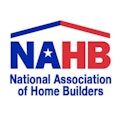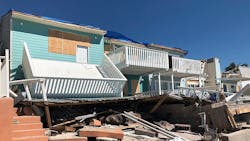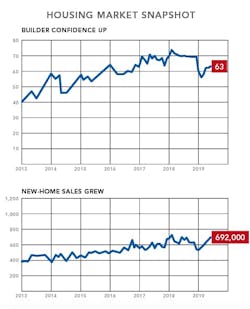Current Codes Make New Homes More Resilient
The National Association of Home Builders is a Washington, D.C.-based trade association representing more than 140,000 members involved in home building, remodeling, multifamily construction, property management, subcontracting, design, housing finance, building product manufacturing, and other aspects of residential and light commercial construction.
Calls for more stringent building codes to mitigate natural disaster damage are simplistic and counterproductive. Overreaching codes would do little to prevent damage in vulnerable communities, but would add greatly to the cost of housing.
Sound building codes are already in place in most communities and they are doing their job. What became readily apparent in the aftermath of 2017’s devastating hurricane season and 2018’s California wildfires is that the properties with the most damage consisted largely of older housing stock.
Today’s new construction is built to more rigorous codes and standards and is more resilient than older housing, FEMA and others repeatedly report. The performance and durability of newly constructed homes is no accident—it is the result of a consensus code development process that includes home builders, architects, engineers, code officials, and other stakeholders.
Many see the results of recent disasters and imagine that stricter codes could have made all the difference. Yet the vast majority of the houses with the most damage are older homes built to outdated codes. Imposing more demanding codes on new residential construction won’t save those older homes but will drive up costs for new homes. It is important to keep in mind that 130 million homes out of the nation’s housing stock of 137 million were built before 2010.
Further, many of today’s new homes are built with sustainable and high-performance building features and materials that contribute to the design and construction of even more durable and resilient homes.
Those calling for the adoption of more stringent and costly building and mitigation requirements fail to understand that this would do little to provide further protection from natural disasters. What it would do is make housing more expensive for hardworking families at a time when the nation is already suffering from a housing affordability crisis.
As policy makers seek to check the effects of future natural disasters, they need to focus on improving the older homes, structures, and infrastructure that are less resistant to natural disasters because they were built when no national model codes existed or were constructed to now-outdated codes.
About the Author

National Association of Home Builders
The National Association of Home Builders (NAHB) is a Washington, D.C.-based trade association representing more than 140,000 members involved in home building, remodeling, multifamily construction, property management, subcontracting, design, housing finance, building product manufacturing, and other aspects of residential and light commercial construction. For more, visit nahb.org. Facebook.com/NAHBhome, Twitter.com/NAHBhome

